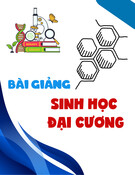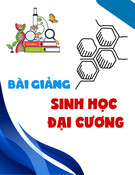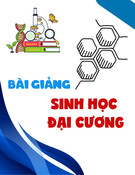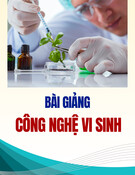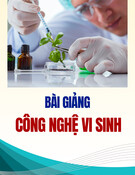
78 Ho Hong Quyen, Vu Chi Mai Tran
OPTIMAL CONDITIONS FOR SYNTHESIS OF POLYOL-FUNCTIONALIZED
CHITOSAN PARTICLES
Ho Hong Quyen*, Vu Chi Mai Tran
The University of Danang - University of Science and Technology, Vietnam
*Corresponding author: hhquyen@dut.udn.vn
(Received: August 07, 2024; Revised: September 26, 2024; Accepted: October 15, 2024)
DOI: 10.31130/ud-jst.2024.562E
Abstract - Adsorbents functionalized with polyol are considered
to be effective for the removal of boron from aqueous solutions.
In this work, polyol-functionalized chitosan particles were
successfully synthesized. Batch experiments were conducted for
the determination of the optimal conditions for the highest degree
of gluconated groups being grafted to chitosan substrate. The
results suggested that acetic acid is the most appropriate solvent
for the dissolution of chitosan powder. Furthermore, an efficient
mole ratio of 1:3 between chitosan and D-(+) - glucono - 1,5
lactone (DGL) was determined. The maximum level of
gluconated groups grafted to chitosan was attained at a reaction
temperature of 110°C and a reaction time of 24h. These optimized
parameters exhibit potential for practical implementations in the
boron removal from aqueous solutions.
Key words - Boron removal; synthesis; polyol; optimal
conditions; chitosan
1. Introduction
Even though boron is considered a crucial
micronutrient for crop growth, the range between its
insufficiency and toxicity levels is relatively small, and it
becomes poisonous for both crops and human beings with
boron excessiveness. Symptoms observed in crops affected
by boron toxicity include altered metabolic processes,
reduced development rates in both shoots and rhizomes,
decreased enzyme reaction rate, disorders in leaves (such
as yellowing, spotting, and leaf dryness), premature fruit
decay, and plant mortality in the presence of high boron
concentrations [1-3]. Furthermore, excessive boron
consumption can adversely affect the immune, central
nervous, cardiovascular, reproductive, and renal functions
and bone metabolism [2, 4]. An investigation conducted on
rats demonstrated that the lowest observed adverse effect
level (LOAEL) for boron was established at 13.3 mg/kg
body weight per day while the no observable adverse effect
level (NOAEL) was found at 9.6 mg/kg body weight per
day [1]. The World Health Organization (WHO) has
provided a guideline boron concentration value of
2.4 mg/L in drinking water; however, many countries
strictly set a boron level in drinking water of 1 mg/L for the
control of boron in water sources.
Boron contamination predominantly originates from
anthropogenic sources as it is found in various industries
such as manufacturers of ceramics, glass, electronics,
semiconductors, pharmaceuticals, nuclear reactors,
fertilizer, and wastewater from coal-fired power plants
[5-6]. A series of methods, such as adsorption [7],
constructed wetland [8], chemical precipitation [9],
coagulation [10], electrocoagulation [11], electrodialysis
[12], and reverse osmosis [13] have been developed for
boron elimination from wastewater. The adsorption
method stands out for its effectiveness in boron removal
and is capable of practical application. This method has
employed a variety of adsorbents, such as activated
carbon [14], natural materials [15], red mud [16], fly ash
[17], nanoparticles [7], layered double hydroxides [18],
selective resins [19], biopolymer-based adsorbents [20],
and synthetic polymer-based adsorbents [21]. The
structure of biopolymer-based adsorbents consists of
functional groups grafted to a backbone derived from
biopolymers such as chitosan, cellulose, sugar, and
alginate [22]. In terms of practicality, biopolymer-based
adsorbents are more cost-effective than other traditional
ion exchange resins. In addition, these adsorbents display
environmentally friendly characteristics and produce
limited secondary pollutants generation after the boron
removal process due to their biodegradable property.
Chitosan is a natural polymer that exhibits a diverse
area of applications owing to its distinctive characteristics
including biocompatibility, biodegradability, ecological
safety, non-toxicity, reactivity and low cost [23].
Chitosan is recognized as an ideal material for adsorption
applications owing to the existence of amine (-NH2) and
hydroxyl (-OH) functional groups, which facilitate the
adsorption of dyes, heavy metals, and pharmaceutical
compounds. Chitosan is modified by grafting functional
groups to active amine (-NH2) and hydroxyl (-OH)
groups. The introduction of new functional groups into
chitosan structure through the application of grafting
techniques potentially enhances the adsorption capacity
of pollutants [24]. Chitosan exhibits solubility in acidic
environments, with its dissolution mechanism primarily
attributed to the protonation of the amine (-NH2) group in
acidic conditions. The dissolution of chitosan in acidic
media yields a viscous chitosan solution. As a result,
different shapes of chitosan are formed such as particles,
beads, films or membranes [25-27].
In our previous work, DGL was functionalized to
chitosan flake to offer polyol for boron removal [28]. In
this research, chitosan powder was selected as the substrate
to enhance the level of grafting functional groups. A series
of parameters in the synthesis process including the kinds
of acid for dissolving chitosan, the mole ratio of chitosan
and DGL, synthesis temperature, and synthesis time was
investigated to determine the optimal conditions for the
highest grafting functional groups.

ISSN 1859-1531 - THE UNIVERSITY OF DANANG - JOURNAL OF SCIENCE AND TECHNOLOGY, VOL. 22, NO. 11C, 2024 79
2. Experiment
2.1. Reagents
Chitosan powder was purchased from Glentham Life
Sciences, UK. DGL was provided from Tokyo Chemical
Industry, Japan. Acetic acid (purity > 99.7%), lactic acid
(purity > 85.0%), oxalic acid (purity > 99.5%),
hydrochloric acid (purity 35.0% - 37.0%), and sodium
hydroxide (purity > 97.0%) were provided from Kanto,
Japan. Toluidine blue indicator solution (C15H16CIN3S)
and N/400 potassium polyvinyl sulfate solution were
obtained from Wako Company, Japan. All reagents were
used as received without further purification.
2.2. Preparation of adsorbent
Modified chitosan particles were synthesized based on
previous work with some adjustments [28]. During the
procedure, 5 g of chitosan powder was added to 400 mL of
acid (1% v/v) under stirring at room temperature for 8h.
Then, DGL was dissolved in chitosan solution at a certain
temperature. The reaction mixture was gradually cooled to
room temperature; afterwards, 1 M NaOH solution was
introduced to induce particle formation. These particles
were separated from the supernatant through
centrifugation, followed by immersion in acetone and
recovery through filtration. The particles underwent a
dialysis process in ultrapure water using a dialysis
membrane (14,000 molecular weight cutoff) to eliminate
residual unreacted DGL. The modified chitosan particles
were rinsed with ultrapure water, dried further in a freeze-
dryer, and finely ground to ensure homogeneity before
further experiment.
2.3. Degree of grafting functional groups
The degree of glucosamine groups (DG%) in chitosan
powder and modified chitosan samples was conducted
through colloidal titration. In detail, 0.1 g of chitosan or
modified chitosan and 8.6 mL of acetic acid were subjected
to a 200 mL volumetric flask. Following this, ultrapure
water was added to the volumetric flask until the solution
obtained the marked line. The mixture was magnetically
strired for the sample dissolving completely then
underwent titration using N/400 PVSK with toluidine blue
as an indicator. The titration process was considered
complete upon the color change of the solution from blue
to light pink (Figure 1). This titration investigation was
repeated 6 times.
Figure 1. The experiment of colloidal titration
The degree of glucosamine groups of chitosan powder
(DG1%) was given as follows:
𝐷𝐺1(%) = 𝑔1
𝑀1 - 𝑀𝐺𝑔1
𝑀𝑁 + 𝑔1
100 (1)
Where g1 is the mole of glucosamine groups (mol),
M1 is the dry mass of chitosan (g), and MG and MN are the
molar weight of glucosamine groups (161 g/mol) and
N-acetylglucosamine groups (204 g/mol), respectively.
The degree of glucosamine groups of modified chitosan
sample (DG2%) was represented as follows:
𝐷𝐺2(%) = 𝑔2
𝑀2 - 𝑀𝑁𝑛−𝑀𝐺𝑔1
𝑀𝐹 +n+𝑔2
100 (2)
Where g2 is the mole of glucosamine groups (mol), n is
the mole of N-acetylglucosamine groups (mol), MF is the
molar weight of functional unit grafting to chitosan
(340 g/mol), and M2 is the dry mass of modified chitosan (g).
The degree of functional groups (DF%) is calculated as
follows:
DF(%) = DG1(%) – DG2(%) (3)
The level of functional groups grafting to chitosan
(LF%) is described as follows:
𝐿𝐹(%) = 𝐷𝐹
𝐷𝐺1
100 (4)
3. Results and discussion
3.1. Synthesis of modified chitosan particles
Figure 2. The preparation of modified chitosan particles
(DN% is N-acetylglucosamine groups)
The reaction between chitosan powder and DGL was
conducted in an aqueous environment. In the acidic
solution, the acceleration of the reaction involving the
gluconated groups was directly grafted in the amine (-NH2)
group of chitosan [28]. The synthesis of gluconated groups
grafted to chitosan resulted in solid particles, and the
determination of the degree of grafting funtional groups

80 Ho Hong Quyen, Vu Chi Mai Tran
relied mainly on the conditions of the synthesis process.
The formation of modified chitosan particles is presented
in Figure 2.
3.2. Effect of various acids
According to the colloidal titration, DG1% in chitosan
powder was determined, and this value accounted for
85.60%. After the reaction of chitosan and DGL, DF% and
LF% were mathematically calculated. Even though
chitosan exhibits many advantages, the low porosity and
low surface area in the form of powder and flakes can limit
their application. To address this problem, physical
modification was developed by transferring chitosan
powder to particles, beads or membranes. In this work, the
conversion of chitosan powder to particles was conducted
by dissolving chitosan powder in acid, and the particles
were formed by dipping in an alkaline environment
(1 M NaOH solution).
Figure 3. The effect of various acids on the degree of
DG2%, DF% and LF%
Different acids were used to dissolve chitosan powder,
including acetic acid, lactic acid, oxalic acid, and
hydrochloric acid. The mole ratio of chitosan and DGL was
1:5, and the reaction was conducted at 110oC for 24h. The
DG2%, DF%, and LF% in modified chitosan samples with
various kinds of acids are presented in Figure 3. It has been
reported that chitosan shows the polycationic property.
Owing to the pKa value of the amine group (-NH2) in
glucosamine units being approximately 6.3, chitosan
becomes positively charged in acidic media [29].
Consequently, the acidic treatment at low pH levels
protonates the amine groups, resulting in the generation of
NH3+. This protonation enhances the electrostatic
interaction between NH3+ and functional groups from
DGL. Based on the data of Figure 3, DG2% of modified
chitosan samples increased sequentially when using acids
in order of acetic acid, lactic acid, oxalic acid, and
hydrochloric acid. It is attributed that amine groups in
glucosamine units are grafted by functional groups, leading
to a decrease in DG2%. The more functional groups are
grafted to chitosan, the less amine groups exist in chitosan.
Notably, the highest DF% with acetic acid was obtained at
15.26%, with the maximum LF% at 17.83%. This finding
strongly suggests that acetic acid is the most suitable acid
for protonation of chitosan. In addition, similar results
reported by previous works indicated that the preferred
solvent for chitosan dissolution widely utilized is acetic
acid. Lactic acid, oxalic acid, and hydrochloric acid have
the potential to be used as solvents for chitosan. Therefore,
acetic acid was chosen for the next experiments.
3.3. Effect of mole ratio of chitosan and DGL
The mole ratio of chitosan and DGL was tested at 1:1,
1:2, 1:3, 1:4, and 1:5. The experimental procedure involved
the reaction at a temperature of 110oC for a duration of 24h,
in which acetic acid used as the solvent for dissolving the
chitosan powder. The results obtained from the analysis of
modified chitosan particle samples with different mole
ratios of chitosan and DGL are depicted in Figure 4,
illustrating DG2%, DF%, and LF%. An observable trend
was noted, showing that DF% increased proportionally
with the rise in DGL mole. Particularly, DF% remained
constant at 15.24% for the mole ratios of 1:3 and 1:4, then
exhibited a slight increase to 15.26% at the mole ratio of
1:5. LF% was calculated at 17.80% for the mole ratios of
1:3 and 1:4 while it reached 17.83% for the mole ratio of
1:5. Based on the variations observed and considering the
economic efficiency in terms of reagent usage, the mole
ratio of 1:3 for chitosan and DGL was chosen as the
optimal condition for subsequent investigations.
Figure 4. The effect of the mole ratio of chitosan and DGL on
DG2%, DF%, and LF%
3.4. Effect of reaction temperature
The reaction temperature is a crucial parameter for
accelerating the rate of reaction. In this experimental setup,
acetic acid was employed to dissolve the chitosan powder.
The ratio of mole between chitosan and DGL was 1:3. The
reaction process took place within the range of 70oC to
120oC for 24h. The effect of reaction temperature is
detailed in Figure 5. The results indicated a significant
correlation between the reaction temperature and DF%. It
was observed that DF% showed a rapid escalation as the
temperature increased from 70oC to 110oC, reaching its
peak at 15.24% at 110oC. Nevertheless, as the reaction
temperature rose to 120oC, DF% dropped to 15.09%. Upon
observation, it was noted that the color of the reaction
solution transformed from yellow to dark orange within the
temperature range of 70oC to 110oC, eventually turning

ISSN 1859-1531 - THE UNIVERSITY OF DANANG - JOURNAL OF SCIENCE AND TECHNOLOGY, VOL. 22, NO. 11C, 2024 81
brown at 120oC. This alteration signifies the decomposition
of DGL at elevated temperatures, a phenomenon explained
by the Maillard reaction [30]. DF% declined as the
temperature surpassed 110oC. Therefore, the reaction
temperature of 110oC was chosen for the next experiment.
Figure 5. The effect of the reaction temperature on
DG2%, DF%, and LF%
3.5. Effect of reaction time
In this investigation, optimal parameters of previous
experiments were applied. In detail, acetic acid was selected
for dissolving chitosan powder. The mole ratio between
chitosan and DGL was established at 1:3. The reaction
solution was heated to 110 oC, and the reaction time was
investigated from 6h to 24h. The effect of reaction time can
be observed in Figure 6. The finding exhibited that DF%
increased sharply from 6h to 18h, then enhanced slightly
until the time reached to 24h. The maximum DF% and the
LF% were recorded at 15.24% and 17.80 % after 24h,
respectively. Hence, the reaction time of 24h was chosen for
the optimal grafting gluconated groups.
Figure 6. The effect of the reaction time on
DG2%, DF%, and LF%
4. Conclusion
Modified chitosan functionalized with gluconated
groups for boron removal was successfully prepared. A
series of parameters were examined to find out the optimal
conditions for grafting gluconated groups. Acetic acid is
the most suitable acid for chitosan powder dissolution. The
most effective mole ratio between chitosan and DGL was
found to be 1:3. The highest LF% was achieved at the
reaction temperature of 110 oC and the reaction time of
24h. These optimal parameters could be applied for further
practical applications in boron removal from aqueous
solution.
Acknowledgments: This work was financially supported
by the Ministry of Education and Training of Vietnam
(Project No: B2023.DNA.09).
REFERENCES
[1] I. Uluisik, H. C. Karakaya, and A. Koc, “The importance of boron
in biological systems”, Journal of Trace Elements in Medicine and
Biology, vol. 45, pp. 156-162, 2018.
[2] F. Al-Badaii, K. M. Jansar, N. A. A. Jalil, and A. A. Halim,
“Sustainable boron removal from aqueous solutions using
pomegranate peel adsorbents: A comprehensive study on isotherms,
kinetics, and thermodynamics”, Desalination and Water Treatment,
vol. 317, pp. 100045, 2024.
[3] K. Yıldırım, “Transcriptomic and hormonal control of boron uptake,
accumulation and toxicity tolerance in poplar”, Environmental and
Experimental Botany, vol. 141, pp. 60-73, 2017.
[4] X. Wang, H. Shao, Z. Chen, X. Yin, Y. Chen, Y. Liu, and W. Yang,
“PEI grafted defective MOF-808 for enhanced boron removal”,
Separation and Purification Technology, vol. 336, pp.126293, 2024.
[5] J. Lin and Y. Huang, “Enhanced boron removal via seed-induced
crystal growth of barium perborate in sequential fluidized-bed
crystallization”, Chemosphere, vol. 361, pp. 142569, 2024.
[6] Y. Li, Y. Liu, C.Yen, and C. Hu, “Boron removal from high sulfate-
containing coal-fired power plant wastewater by an
ultrasound/bipolar electrocoagulation process with aluminum
electrodes”, Journal of Environmental Chemical Engineering, vol.
11, 5, pp. 110473, 2023.
[7] T. Chen, Q. Wang, J. Lyu, P. Bai, and X. Guo, “Boron removal and
reclamation by magnetic magnetite (Fe3O4) nanoparticle: An
adsorption and isotopic separation study”, Separation and
Purification Technology, vol. 231, pp. 115930, 2020.
[8] K. Yildirim and G. Ç. Kasim, “Phytoremediation potential of poplar
and willow species in small scale constructed wetland for boron
removal”, Chemosphere, vol. 194, pp. 722-736, 2018.
[9] A. Siciliano, C. Limonti, G. M. Curcio, and F. Marchio, “Boron
removal from oilfield produced water through a precipitation
process with bottom ash leachate and Ca(OH)2”, Journal of Water
Process Engineering, vol. 50, pp. 103310, 2022.
[10] J. Lin, N. N.N. Mahasti, and Y. Huang, “Recent advances in
adsorption and coagulation for boron removal from wastewater: A
comprehensive review”, Journal of Hazardous Materials, vol. 407,
pp. 124401, 2021.
[11] G. Yao, F. Zeng, Z. An, H. Li, T. Zhu, and J. Fang, “Enhancement
mechanism for boron removal at high anodic polarization potential
during electrocoagulation using iron-based materials”, Journal of
Environmental Chemical Engineering, vol. 10, 2, pp. 107279, 2022.
[12] W. Hung, R. Horng, and C. Tsai, “Effects of process conditions on
simultaneous removal and recovery of boron from boron-laden
wastewater using improved bipolar membrane electrodialysis
(BMED)”, Journal of Water Process Engineering, vol. 47, pp.
102650, 2022.
[13] Q. Lyu and L, Lin, “Rational design of reverse osmosis membranes
for boron removal: A counter-intuitive relationship between boron
rejection and pore size”, Separation and Purification Technology,
vol. 331, pp. 125699, 2024.
[14] J. Kluczka, W. Pudło, and K. Krukiewicz, “Boron adsorption
removal by commercial and modified activated carbons”, Chemical
Engineering Research and Design, vol. 147, pp. 30-42, 2019.

82 Ho Hong Quyen, Vu Chi Mai Tran
[15] V. Masindi, M. Gitari, H. Tutu, and M. Debeer, “Removal of boron
from aqueous solution using magnesite and bentonite clay
composite”, Desalination and Water Treatment, vol. 57, 19, pp.
8754-8764, 2016.
[16] Y. Cengeloglu, A.Tor, G. Arslan, M. Ersoz, and S. Gezgin,
“Removal of boron from aqueous solution by using neutralized red
mud”, Journal of Hazardous Materials, vol. 142, 1–2, pp. 412-417,
2007.
[17] I. Polowczyk, J. Ulatowska, T. Koźlecki, A. Bastrzyk, and W.
Sawiński, “Studies on removal of boron from aqueous solution by
fly ash agglomerates”, Desalination, vol. 310, pp. 93-101, 2013.
[18] T. Kameda, J. Oba, and T. Yoshioka, “Removal of boron and
fluoride in wastewater using Mg-Al layered double hydroxide and
Mg-Al oxide”, Journal of Environmental Management, vol. 188, pp.
58-63, 2017.
[19] İ. İpek, N. Kabay, and M. Yüksel, “Modeling of fixed bed column
studies for removal of boron from geothermal water by selective
chelating ion exchange resins”, Desalination, vol. 310, pp. 151-157,
2013.
[20] A. A. Oladipo and M. Gazi, “Hydroxyl-enhanced magnetic chitosan
microbeads for boron adsorption: Parameter optimization and
selectivity in saline water”, Reactive and Functional Polymers, vol.
109, pp. 23-32, 2016.
[21] B.F. Senkal and N. Bicak, “Polymer supported iminodipropylene
glycol functions for removal of boron”, Reactive and Functional
Polymers, vol. 55, pp. 27-33, 2003.
[22] M. M. Nasef, M. Nallappan, and Z. Ujang, “Polymer-based
chelating adsorbents for the selective removal of boron from water
and wastewater: A review”, Reactive and Functional Polymers, vol.
85, pp. 54-68, 2014.
[23] E. Salehi, P. Daraei, and A. A. Shamsabadi, “A review on chitosan-
based adsorptive membranes”, Carbohydrate Polymers, vol. 152, 5,
pp. 419-432, 2016.
[24] F. Kaya and A. Özer, “Selective sulfate sorption from boric acid
factory process liquor: Chitosan-bentonite biocomposite film
synthesis as sorbent”, Minerals Engineering, vol. 187, pp. 107777,
2022.
[25] S. Shenvi, A. F. Ismail, and A. M. Isloor, “Preparation and
characterization study of PPEES/chitosan composite membrane
crosslinked with tripolyphosphate”, Desalination, vol. 344, pp. 90-
96, 2014.
[26] A. Homez-Jara, L. D. Daza, D. M. Aguirre, J. A. Muñoz, J. F.
Solanilla, and H. A. Váquiro, “Characterization of chitosan edible
films obtained with various polymer concentrations and drying
temperatures”, International Journal of Biological Macromolecules,
vol. 113, pp. 1233-1240, 2018.
[27] Z. A. Sutirman, M. M. Sanagi, K. J. Abd Karim, W. A. W. Ibrahim,
and B. H. Jume, “Equilibrium, kinetic and mechanism studies of
Cu(II) and Cd(II) ions adsorption by modified chitosan beads”,
International Journal of Biological Macromolecules, vol. 116, pp.
255-263, 2018.
[28] H.Q. Ho, “Synthesis of eco-friendly adsorbents for the removal of
contaminants in wastewater”, Doctoral dissertation, Tokushima
University, 2019.
[29] B. S. Farias, T. R. Sant'Anna, C. Junior, and L. A. A. Pinto,
“Chitosan-functionalized nanofibers: A comprehensive review on
challenges and prospects for food applications”, International
Journal of Biological Macromolecules, vol. 123, pp. 210-220, 2019.
[30] H. B. Cardoso, P. A. Wierenga, H. Gruppen, and H. A. Schols,
“Maillard induced aggregation of individual milk proteins and
interactions involved”, Food Chemistry, vol. 276, pp. 652-661,
2019.

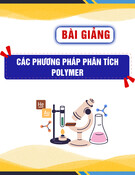
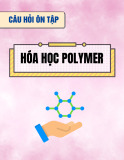

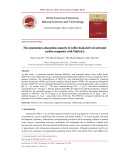
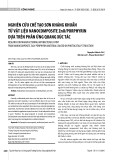
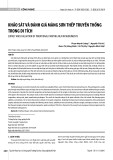
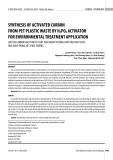
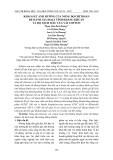

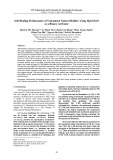



![Tài liệu học tập Chuyên đề tế bào [mới nhất]](https://cdn.tailieu.vn/images/document/thumbnail/2025/20250906/huutuan0/135x160/56151757299182.jpg)

